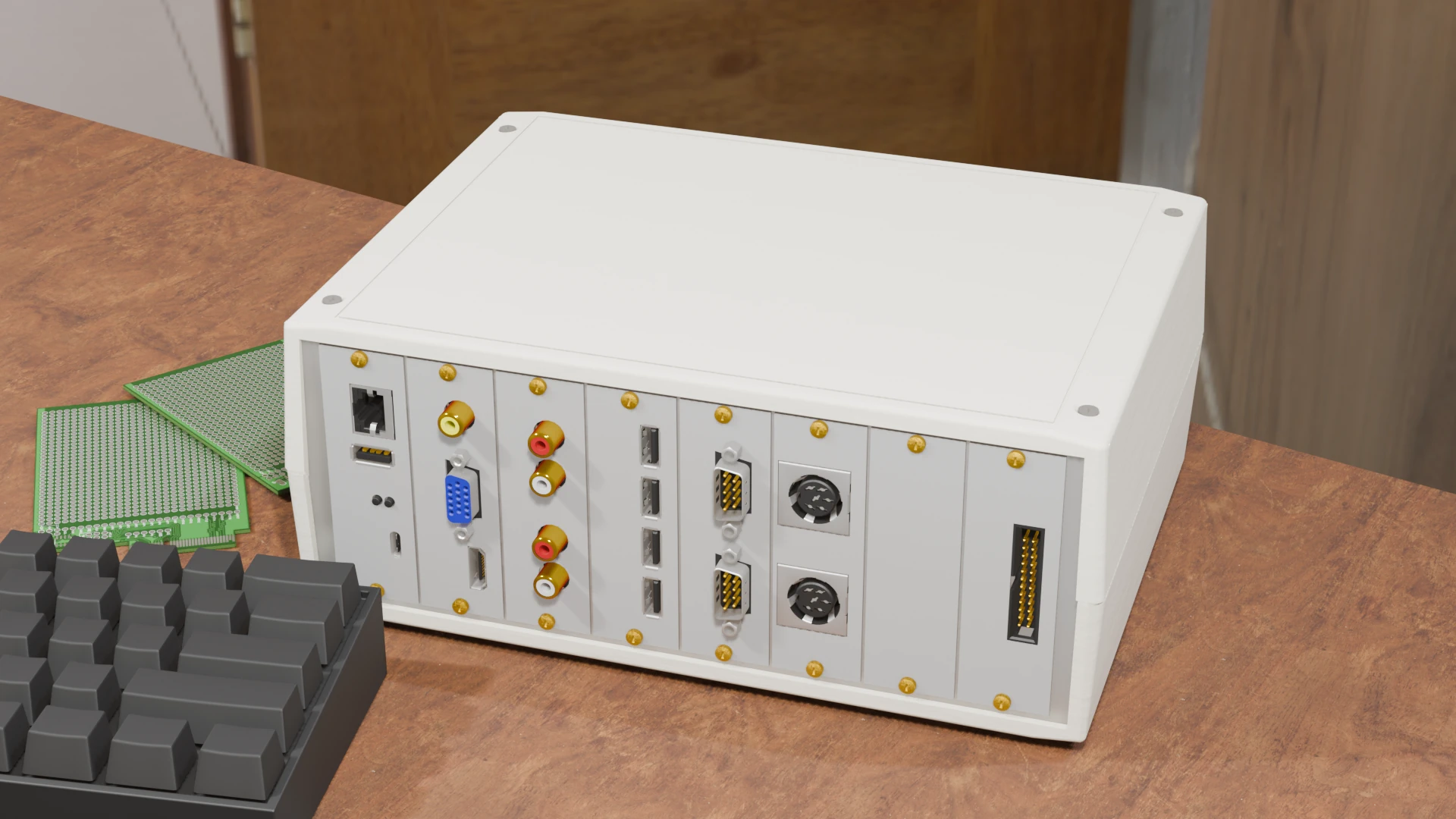About the Ashet Home Computer
The Vision
The Ashet Home Computer is a modern interpretation of the classic home computer, designed from the ground up to be both fully hackable and fully understandable. It balances simplicity and capability, providing everything necessary for daily computing tasks without unnecessary complexity.
Key Aspects:
- Fully Hackable and Understandable
Every aspect of the system is transparent, well-documented, and designed for exploration and customization. - Daily Computing Possible
Suitable for (simple) everyday tasks:- Desktop OS with intuitive GUI
- Text document reading and writing (plaintext, no WYSIWYG)
- Internet browsing (limited to HTML and basic CSS, no JavaScript)
- E-Mail reading and writing
- Chatting (IRC)
- Built-in comprehensive system documentation
- Programming with interpreted languages can be done on the system itself
- Programming with compiled languages should be done externally
- Designed for Simplicity
Crafted to be fully understood and maintained by a single individual:- Minimal abstraction layers—just enough complexity for functionality, but simple enough to be comprehensible.
- Avoidance of complex modern protocols and standards:
- No PCI or PCI Express
- Limited to USB 1.1 for ease of use and implementation
- Simplified electronics design:
- No use of BGA components
- Easily repairable with basic hand-soldering and wire-patching techniques
This vision ensures that users at all skill levels – from learners and hobbyists to seasoned developers – can fully grasp, modify, and expand their home computing experience.
The idea behind the Daily Computing aspect is to show that most of these tasks do not require incredibly powerful hardware but could and still can done on small, low-power machines.
Audience
Makers
For creative individuals building custom hardware interfaces, experimenting with electronics, and developing innovative DIY solutions, Ashet provides modular expandability and comprehensive documentation.
Hackers
Ideal for tech enthusiasts and hardware hackers who appreciate full hardware transparency, direct register access, and the flexibility to emulate or interface various digital protocols.
Demosceners
With its limited, yet powerful audio and video capabilities and multi-core processing, Ashet supports artists pushing creative and technical limits, producing visually and sonically compelling real-time demonstrations.
Educators
Ashet serves as a tangible teaching tool to illustrate comprehensive computer system design, bridging the gap between theory and hands-on learning with extensive documentation and accessible hardware architecture.
Students
Providing practical experience in computer hardware and software integration, Ashet encourages active learning and experimentation, from fundamental principles to advanced system development.
Self-Learners
For independent learners seeking to deepen their understanding of computing and electronics, Ashet offers an approachable, thoroughly documented platform suitable for self-guided exploration and discovery.
Comparison with other projects
The following table shows a comparison to other “small” computers. It should help you get an idea where the Ashet Home Computer is in relation to other projects.
| Feature | Ashet Home Computer | Raspberry Pi 4 | Arduino Uno REV3 | Neotron Pico | Cody Computer |
|---|---|---|---|---|---|
| CPU Bus Width | 32 bit | 64 bit | 8 bit | 32 bit | 8 bit |
| CPU Architecture | Arm Cortex-M33 | Arm Cortex-A72 | AVRe+ | Arm Cortex-M0+ | 6502 |
| CPU Model | Raspberry Pi RP2350 | Broadcom BCM2711 | ATmega328P | Raspberry Pi RP2040 | W65C02S |
| CPU Cores | 2 | 4 | 1 | 2 | 1 |
| CPU Clock | 150 MHz | 1.8 GHz | 16 MHz | 133 MHz | 1 MHz |
| System Memory | 8 MB | 1, 2, 4 or 8 GB | 2 KB | 264 kB | 64 kB |
| Comprehensible |  |  |  |  |  |
| Modern I/O |  |  |  |  ¹ ¹ |  |
| Modular Design |  |  |  |  |  ² ² |
| Full Documentation |  |  |  |  |  |
| Ethernet |  |  |  |  |  |
| Parallax Propeller |  (Propeller 2) (Propeller 2) |  |  |  |  (Propeller 1) (Propeller 1) |
¹Neotron Pico uses PS/2 for mouse/keyboard and VGA for video.
²Cody Computer has a single cartridge that can be added.
